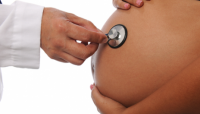Article
Gestational Diabetes Mellitus Risk Linked to Noise Exposure
Author(s):
Higher levels of nighttime noise exposure during the first trimester showed correlation with a risk for GDM.

First-trimester exposure to nighttime noise is significantly associated with the incidence of gestational diabetes mellitus (GDM), per a study from Seoul National University.
The study suggested that noise exposure at night could be a risk for GDM for pregnant women and that measures to reduce this are “critical for the prevention of this health risk,” authors Kyoung-Bok Min, MD, of the Department of Preventative Medicine in the College of Medicine at Seoul National University, and Jin-Young Min, MD, of the Institute of Health and Environment at the School of Public House at SNU, wrote.
18,165 pregnant women were examined for the study, which treated noise levels, measured in decibels (dB), as both continuous and categorical variable. The study population was divided into 4 quartiles of daytime (7AM to 6AM) and nighttime (11AM to 7AM) noises.
For daytime, Quartile 1 covered <60.27 dB; Quartile 2 60.27-61.5 dB; Quartile 3 61.5-62.79 dB; and Quartile 4 ≥62.79 dB. For nighttime, Quartile 1, <54.22 dB; Quartile 2, 54.22—55.84 dB; Quartile 3, 55.84–57.34 dB; and Quartile 4, ≥57.34 dB. The mean noise levels being 61.58 dB for daytime and 55.66 dB for nighttime.
8.8% of the participants (1,596 total) developed GDM. The “prevalence of GDM was significantly increased with increase in the quartiles of the first-trimester nighttime noise,” the authors wrote. Daytime noise, however, did not show a significant correlation to increases in noise and GDM’s prevalence.
“The percentage of pregnant women with GDM gradually increased with increasing nighttime noise, with 20.30%, 22.56%, 22.68%, and 32.46% classified as Quartile 1, 2, 3, and 4, respectively,” the authors wrote.
They found that there was no significant difference between those who developed GDM and those who did not with respect to health behaviors like exercise, smoking, or alcohol consumption.
The study concluded that the adjusted odds ratio (OR) for GDM associated with a 1 dB increase in nighttime noise exposure was 1.07 (95% CI: 1.05-1.10), and the adjusted OR in nighttime Quartile 4 was 1.61 (95% CI: 1.38-1.87).
Although this was the first study to examine GDM’s association with noise exposure, the risk for type 2 diabetes (T2DM) has been suggested to have an association with noise exposure in previous studies.
“The mechanism by which exposures to noise affect the progression of T2DM remains unclear,” the authors wrote. “However, plausible biological explanations have been suggested on the possibility that noise-induced stress responses can activate the hypothalamic—pituitary–adrenal axis and the sympathetic autonomic nervous system, which in turn may result in dysregulation of β-cell function, insulin sensitivity, and glucose tolerance.”
The authors of the study suggested that further examinations are necessary to confirm whether noise exposure increases the risk of diabetes in pregnant women, as observed in their study.
Noise pollution has been estimated as the second biggest global environmental stressor, accounting for the loss of at least 1 million healthy life years in western Europe alone, per the World Health Organization (WHO).
Related Coverage
Alcohol Consumption Linked to Reduction in Diabetes Risk
Diabetic Remission Linked to FGF-19 Levels in Bariatric Surgical Patients
Diabetes Associated with Poor Survival Outcome for CHF Patients




